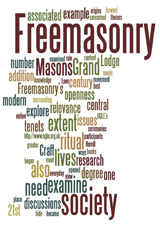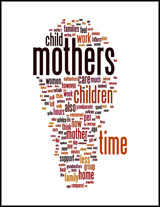Know Your Place
– Headmap manifesto and the spatialised internet revolution.
- "there are notes in boxes that are empty.
- every room has an accessible history
- every place has emotional attachments you can open and save
- you can search for sadness in new york"
- Headmap manifesto
No, these words are not bad poetry. Nor are they song lyrics. They aren't even from an advertisement for mobile phones. They form part of a technological vision of the future, heralding an age in which our spatial experiences can be overlaid with a rich layer of information – images, text, sound – through GPS capable mobile WiFi devices and a lot of community spirit. This is the Headmap manifesto, an exploration of the technological, and more importantly the social, potential of an 'outside internet' – external, spatialised computing.
"a headmap is bound up with the feedback loop when something internal is externalised, seen simultaneously in the context of external reality, manipulated in that context, and reinternalised."
The Headmap manifesto calls for a reinterpretation of space by layering annotations, ideas, images, anything that can be transmitted, over the top of our spatial experiences. This may sound terrifically abstract, but what it amounts to in technical terms is this:
"The linking of a location aware device (e.g. something with GPS functionality) with a handheld computer (i.e. an IPAQ or a handspring) together with a mobile, wireless internet connection."
This functional trio provides a platform for bringing traditionally computer-based technology into the spatial domain. For example, two friends have access to the required technology. Friend one walks past a tree in full spring leaf and attaches a piece of music to the geographic location of the tree as a message for friend two. When friend two walks past the tree, unaware that friend one has passed this way earlier, the tree appears to play this piece of music to him, as the message originally left by the first handheld computer is triggered by the second device reaching a marked geographical point.
Such examples are obviously limited by the scope of a handheld personal computer - a mobile phone 'singing a song' is not going to be as impressive as the tree itself breaking out into full voice. Furthermore, this approach would lead to a population so busy receiving messages on their handheld computers that they are unable to look at/experience the space around them — an outcome which seems at odds with the Headmap ideology. However, the development of 'wearable computing', retinal displays that can be clipped onto glasses and other myriad possibilities like ear inserts or fully blown cerebral implants (all of which are probably up and running in a laboratory in MIT as this is being written) can facilitate talking trees, 'notes left in empty boxes', burning skulls left in the middle of bad restaurants and arrows drawn over landscapes pointing out the good bookshops. The possibilities are as wide as technological innovation and human imagination will allow.
The Headmap manifesto is clearly not just a geeky vision of a future of 'doing cool stuff' with phones. The particular combination of a free wireless internet bandwidth with mobile, location-aware personal computers is seen not just as a technological innovation, but as a social one. Indeed, the idea of free wireless broadband access stems from a particularly communal, DIY ethic — as the consume.net website puts it:
"Consume is a collaborative strategy for the self-provision of a broadband telecommunications infrastructure."
The idea is to bypass direct ISP connectivity through nodes which maximise bandwidth and allow others to use it over a larger area. Headmap looks forward (perhaps a little too idealistically) to a time when wireless internet capability will be provided by cities just as street lights are provided now. This is part of a utopian ideal in which people will reclaim public space, forge new connections, enter into barter arrangements and find love and sex a lot more easily through an extra layer of annotation invisibly etched onto space, and perceptible through location aware, wireless internet-connected mobile computers.
The utopianism of the Headmap manifesto raises a few problems for the pragmatist. For instance, the examples given of the potential uses of the network are fairly benevolent — finding someone to barter a conversation for a sandwich with, or making connections with people who are bored and in your neighbourhood who happen to have a mutual friend in common. Even more prosaically, there are ideas like phoning your keys to find out where they are. On a visual level, there is the use of signs and symbols, with cycle couriers perhaps offering their short-cut route maps to people new to an area, or more emotionally, a 'tag' on a park bench or a piece of pavement marking it as the place of an event of importance — a first kiss, perhaps, or a religious epiphany. So far, so harmless. But, human nature being as it is, not everyone will want to use their spatialised computing capacity in this way. What of the jealous lover who leaves insults over a rival's house, or the downright mischievous who distribute inaccurate information about an area, or worse, those who would choose to leave racist/sexist/homophobic jibes at certain points on a street or a building?
The Headmap manifesto suggests a system of filtering, combined with an 'FOAF' (Friend Of A Friend) based network. Yet this would surely result in cliqueyness — if the idea is to forge stronger connections with like-minded souls in your local community, then there is a need to include genuine strangers in that network. Filtering also acts as a means of controlling the type of information you pick up on your portable device, which means that certain 'undesirable' types of information can be screened out. Of course, we all do this kind of filtering in our relationships and through our choice of media — choosing to go to a techno club one night means that listening to classical music on that particular night is screened out as an option, without this being a particularly worrisome outcome. In the context of the Headmap manifesto, however, screening is confusing because it turns what is intended to be a communal pool of information and reinterpretation of public space into a glorified version of picture-messaging your mates, excluding anyone at the periphery of your current circle of personal acquaintances. The problem of inclusiveness versus safety, of open information versus unwanted information, has dogged the development of the internet and will subsequently hang over the kind of spatial internet culture that Headmap seeks to develop.
Is more information always a better thing? This is a another question which the Headmap manifesto raises. Encouraging and enabling people to think differently about their use of space and their emotional associations with the space in which they move is without doubt a interesting and worthy goal. However, given that not everybody has an imagination that runs like wildfire, we can safely predict that much of this spatial internet use will be taken up with pointers to good restaurants, tags saying "I snogged X here" and amusing 'invisible' graffiti about bacon on police station buildings. The Headmap thinkers would probably point out in response to this point that, despite the fact that a high proportion of the material on the net is utter dross, and often offensive, nasty dross at that, this has not prevented the internet from causing a complete communications revolution in a relatively short space of time. Just because most people use the net for porn and shopping doesn't mean that it hasn't caused a seismic shift in the way that we communicate and even think. This principle should perhaps be extended to the ideas of the people behind Headmap — even if the end use turns out to be something massively dull, the original concept is radical and will ultimately change the way people communicate and function in public spaces.
The Headmap manifesto does not just deal with the implications of GPS etc on our use of physical space. What is also explored is the idea of non-linear desktop space, and the possibilities opened up through software like Tinderbox to completely change our use of computer information management systems. As it is put on the website:
"The basic unit of the Internet from a general user point of view looks like being the paragraph of text, whether e-mail, blog entry, section of an IM/IRC exchange or whatever. Tools like Tinderbox can break through the stranglehold of timelines, alphabetical indexing and a few inflexible categories, that for many users are starting to feel like bleak living arrangements."
Tinderbox apparently works by allowing the user to assign thoughts or pieces of information to boxes, and then to arrange these in a number of different ways, such as 'geographical locations' (assigned by the user), categories like 'image' or 'emotion' or hierarchies i.e. one thought springing from another. These branches would interlink, forming a network which arguably would represent the connections between our ideas and whatever gathered information we have more accurately than a traditional linear alphabetised filing system. The question of whether this is true or not, and whether Tinderbox works well as an information manager, is subsidiary to the idea that use of packages like this break through the status quo of everyday computer use and make us think more carefully about connections between data and ideas. And, of course, use of space, in the desktop as well as the physical world.
The Headmap manifesto covers a bewildering range of possibilities made real by developments in location aware wireless internet technology. It also seeks to explore our understanding of architecture, social responsibility, public space and the limitations of a manufactured spatial environment. Location aware computing devices may not provide solutions to the many problems raised by the issue of human attitudes towards, and use of, physical space, not least the idea that we are all, often unknowingly, shaped by the built environments that surround us. Yet such devices offer a way of interpreting space which is radically new, and which throws up a myriad of beautiful possibilities. This comes alongside a myriad of banal and unpleasant possibilities, which is the necessary counterpart to any Utopian scheme. We can only hope that the more interesting aspects of the Headmap manifesto can become reality while maintaining an element of that original idealism, and that the enterprise of spatial computing avoids being entirely swallowed up by advertising and corporate use. As the authors of the manifesto would themselves put it:
"The Internet has already started leaking into the real world. Headmap argues that when it gets truly loose the world will be new again."





